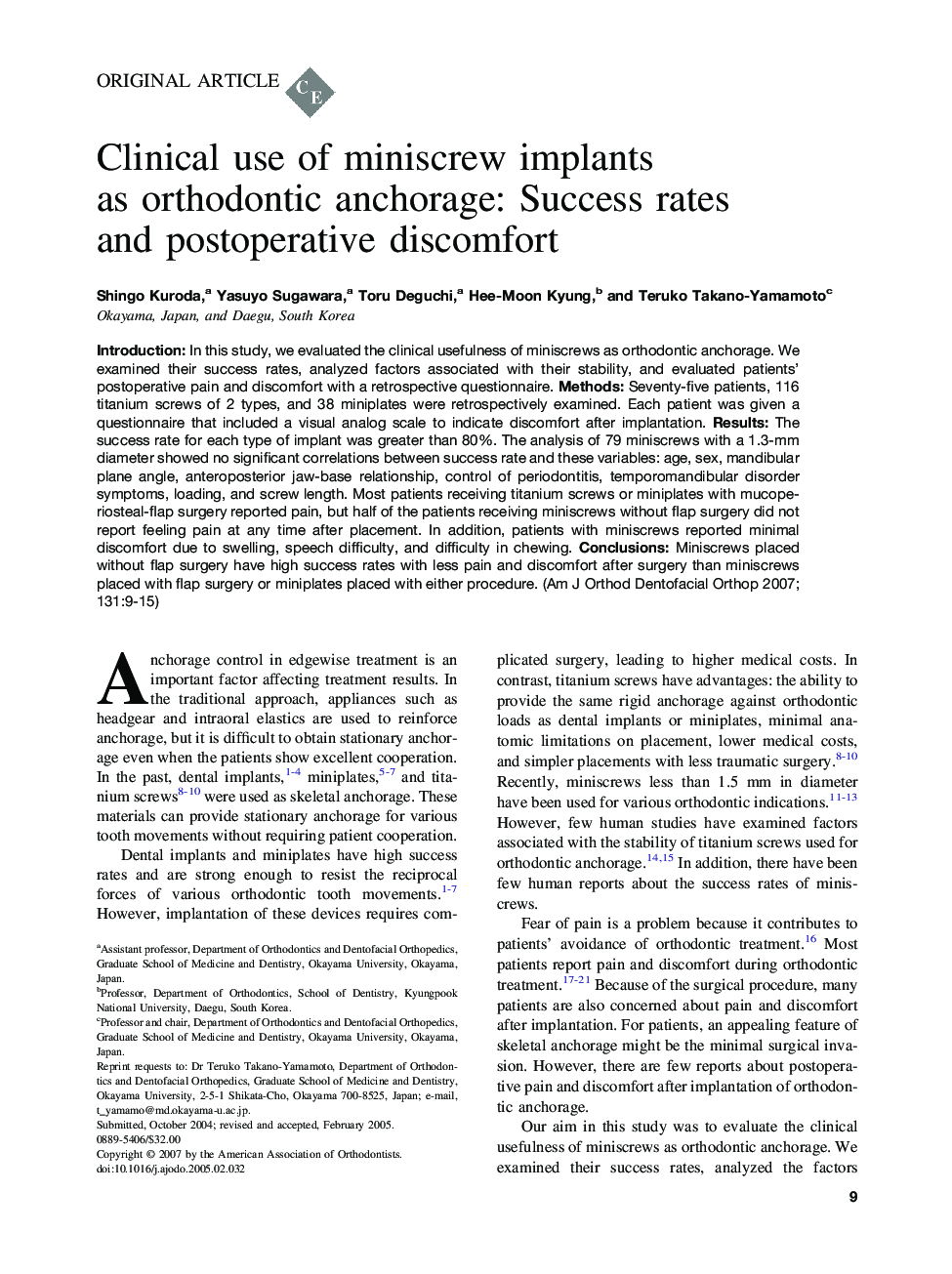| Article ID | Journal | Published Year | Pages | File Type |
|---|---|---|---|---|
| 3120458 | American Journal of Orthodontics and Dentofacial Orthopedics | 2007 | 7 Pages |
Introduction: In this study, we evaluated the clinical usefulness of miniscrews as orthodontic anchorage. We examined their success rates, analyzed factors associated with their stability, and evaluated patients’ postoperative pain and discomfort with a retrospective questionnaire. Methods: Seventy-five patients, 116 titanium screws of 2 types, and 38 miniplates were retrospectively examined. Each patient was given a questionnaire that included a visual analog scale to indicate discomfort after implantation. Results: The success rate for each type of implant was greater than 80%. The analysis of 79 miniscrews with a 1.3-mm diameter showed no significant correlations between success rate and these variables: age, sex, mandibular plane angle, anteroposterior jaw-base relationship, control of periodontitis, temporomandibular disorder symptoms, loading, and screw length. Most patients receiving titanium screws or miniplates with mucoperiosteal-flap surgery reported pain, but half of the patients receiving miniscrews without flap surgery did not report feeling pain at any time after placement. In addition, patients with miniscrews reported minimal discomfort due to swelling, speech difficulty, and difficulty in chewing. Conclusions: Miniscrews placed without flap surgery have high success rates with less pain and discomfort after surgery than miniscrews placed with flap surgery or miniplates placed with either procedure.
